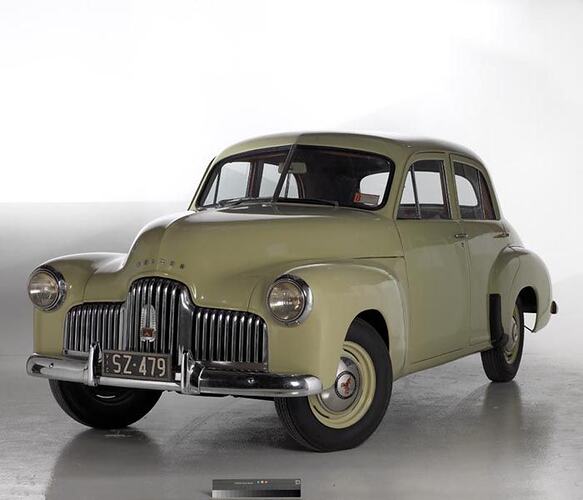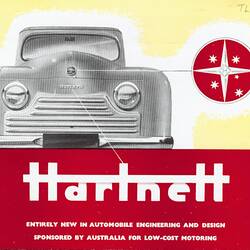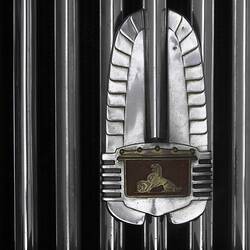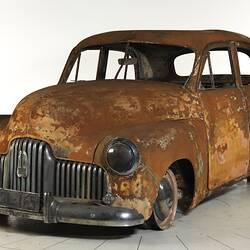Popularly known as the FX, the Holden 48-215 was the first motor car to be mass-produced in Australia and has come to represent the growing confidence of Australia in the post-1945 world where the new consumer driven economy led to massive changes for Australians and their urban environment as rising prosperity and car ownership allowed new housing, shopping, leisure and working opportunities.
The appointment of Englishman, Laurence Hartnett as Managing Director of General Motors subsidiary General Motors-Holden's in Australia in 1934 was an important first step in the project to build a complete car in Australia. The local motor industry at this time only built bodies for imported engine and chassis units, but under Hartnett, GM-H began to develop its own design expertise and introduced the locally invented 'All-Enclosed Coupe' or Sloper body in 1935 and the US-style all-steel body in 1937.
Hartnett became a tireless advocate for an all-Australian car and lobbied political and business leaders as part of a general trend towards the growth of 'secondary industries' in Australia as a means of overcoming Australia's dependency on agricultural produce. GM-H even took a 10% shareholding in the new Commonwealth Aircraft Corporation established in 1936 by a consortium of leading Australian mining interests to build military aircraft in Australia for the RAAF. The selection of a US design (Wirraway) caused a considerable backlash from political and industrial interests tied to Britain. By 1939 the UAP government had taken the first step towards making an all-Australian car a part of national policy by introducing the Motor Vehicles Bounty Act under which in 1940 it curiously handed the right to develop an Australian car to Australian Consolidated Industries which had no experience in vehicle manufacturing. Under Hartnett, GM-H had already begun preliminary design work on an Australian car project.
The outbreak of the Second World War in September 1939 provided an opportunity for local manufacturers to introduce new machinery and production methods to make munitions. GM-H produced vehicles, guns and aircraft components as well as its first engine, the 130hp Gipsy Major for the Tiger Moth trainer. By 1945, the Curtin ALP government had abandoned the Motor Vehicles Bounty Act and GM-H had put forward their own proposal based on a pre-war US design for a small Chevrolet sedan. A GM-H project team travelled to the USA to work with General Motors on design and development and three prototypes were shipped to Australia in December 1946. After considerable testing on Melbourne roads, the first six-cylinder 48-215 was unveiled by Prime Minister Ben Chifley at the GM-H factory at Fishermans Bend on 29 November 1948. Hartnett had resigned from the company in 1947 to remain in Australia following a disagreement with GM which saw him replaced with US executive Harold Bettle. Just over 100,000 48-215 cars were completed before the FJ replaced it in production in late 1953.
More Information
-
Keywords
-
Authors
-
Article types



